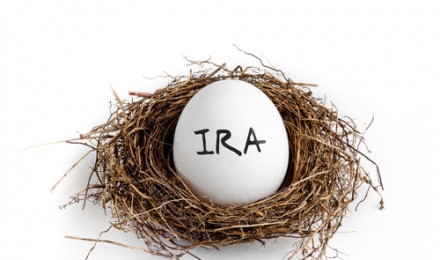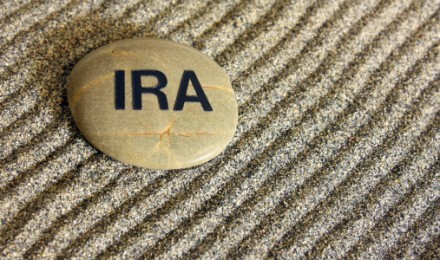Since their inception in 1982, millions of Americans have used IRAs and their Roth cousins to save for retirement. But there are some limits to the tax advantages that these accounts offer; the IRS has mandated that all monies that are withdrawn from a traditional or Roth IRA before age 59 ½ must be subject to a 10% early withdrawal penalty as a means of encouraging taxpayers to let the money in these accounts grow until retirement. The IRS has softened this restriction over the years by allowing for certain exceptions to this rule. Taxpayers who face the following situations may take early IRA distributions from either their traditional or Roth IRAs without penalty:
- Death (the beneficiary will receive the proceeds tax-free
- Total long-term disability, certified by a doctor
- Medical expenses that exceed 7.5% of the taxpayer’s adjusted gross income that are not reimbursed by any type of insurance or reimbursement plan (these expenses must be qualified expenses that can be listed on Schedule A of the 1040 if the taxpayer were to itemize deductions)
- Any amount taken to pay for health or medical insurance, provided that the taxpayer has been unemployed through no fault of his or her own and received unemployment compensation for at least 12 weeks straight. The distributions must also be taken in either the year that the unemployment compensation was paid or the following year, and no later than 60 days after reemployment begins
- Substantially equal series of payments – under Rule 72(t) in the Internal Revenue Code, IRA owners can begin taking distributions in the form of an annuity that is actuarially calculated to last until death. These calculations can take one of three forms, listed on page 53 of IRS Pub. 590. The method of calculation can be changed once without incurring the penalty
- Qualified higher education expenses, including tuition, books, fees and supplies and also room and board for those who are at least half-time students. The student can either be the IRA owner or a spouse or dependent.
- Expenses incurred while building or buying a first home, up to $10,000. The homeowner can be either the IRA owner or a spouse or lineal descendant or ancestor.
- Distributions taken by military reservists as a result of a call back to active duty for at least 179 days
- Any qualified rollover or transfer from or to an IRA from another IRA or qualified plan
- Any tax levy from the IRS
Roth IRA owners can also withdraw their contributions tax-free at any time without penalty regardless of their age. For more information on traditional and Roth IRAs, download Pub. 590 from the IRS website at www.irs.gov or consult your financial advisor.
Since their inception in 1982, millions of Americans have used IRAs and their Roth cousins to save for retirement. But there are some limits to the tax advantages that these accounts offer; the IRS has mandated that all monies that are withdrawn from a traditional or Roth IRA before age 59 ½ must be subject to a 10% early withdrawal penalty as a means of encouraging taxpayers to let the money in these accounts grow until retirement. The IRS has softened this restriction over the years by allowing for certain exceptions to this rule. Taxpayers who face the following situations may take early IRA distributions from either their traditional or Roth IRAs without penalty:
- Death (the beneficiary will receive the proceeds tax-free
- Total long-term disability, certified by a doctor
- Medical expenses that exceed 7.5% of the taxpayer’s adjusted gross income that are not reimbursed by any type of insurance or reimbursement plan (these expenses must be qualified expenses that can be listed on Schedule A of the 1040 if the taxpayer were to itemize deductions)
- Any amount taken to pay for health or medical insurance, provided that the taxpayer has been unemployed through no fault of his or her own and received unemployment compensation for at least 12 weeks straight. The distributions must also be taken in either the year that the unemployment compensation was paid or the following year, and no later than 60 days after reemployment begins
- Substantially equal series of payments – under Rule 72(t) in the Internal Revenue Code, IRA owners can begin taking distributions in the form of an annuity that is actuarially calculated to last until death. These calculations can take one of three forms, listed on page 53 of IRS Pub. 590. The method of calculation can be changed once without incurring the penalty
- Qualified higher education expenses, including tuition, books, fees and supplies and also room and board for those who are at least half-time students. The student can either be the IRA owner or a spouse or dependent.
- Expenses incurred while building or buying a first home, up to $10,000. The homeowner can be either the IRA owner or a spouse or lineal descendant or ancestor.
- Distributions taken by military reservists as a result of a call back to active duty for at least 179 days
- Any qualified rollover or transfer from or to an IRA from another IRA or qualified plan
- Any tax levy from the IRS
Roth IRA owners can also withdraw their contributions tax-free at any time without penalty regardless of their age. For more information on traditional and Roth IRAs, download Pub. 590 from the IRS website at www.irs.gov or consult your financial advisor.







